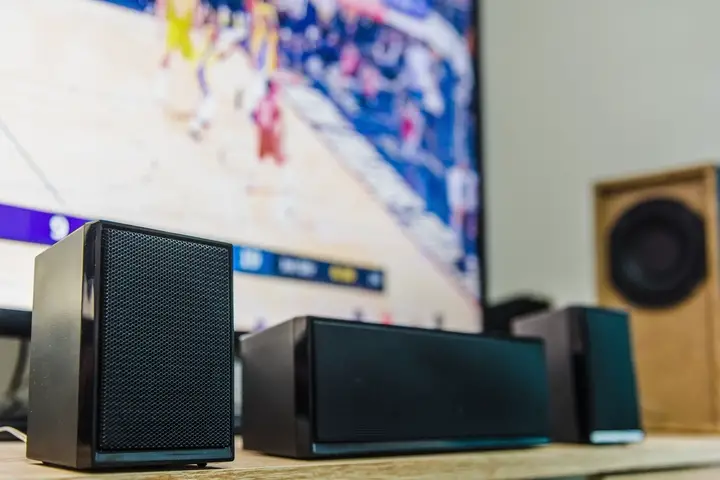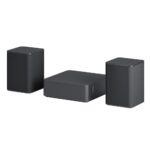With 5 Ways to Optimize Your Surround Sound System for the Best Audio at the forefront, let’s delve into the realm of captivating audio experiences, where sound meets perfection in a symphony of harmony and precision.
Discover the secrets to unlocking the full potential of your surround sound system, as we explore the intricate dance between technology and artistry in the pursuit of sonic excellence.
Overview of Surround Sound Systems
Surround sound systems are audio systems that create a multidimensional sound experience by using multiple speakers placed around the listener. These systems aim to replicate the feeling of being in a live performance or movie theater, enhancing the overall audio quality and immersing the listener in the sound environment.
Optimizing a surround sound system is crucial to ensure the best audio experience possible. By fine-tuning the settings, speaker placements, and audio calibration, users can achieve a more balanced and immersive sound that enhances their music, movies, and gaming experiences.
Popular Surround Sound System Brands
- Bose: Known for their premium sound quality and sleek designs, Bose offers a range of surround sound systems that cater to different needs and budgets.
- Sonos: Sonos is popular for its wireless surround sound systems that provide seamless connectivity and high-quality audio performance.
- Sony: Sony is a well-established brand in the audio industry, offering surround sound systems with advanced features and technologies for an enhanced listening experience.
- Logitech: Logitech is known for its affordable yet high-quality surround sound systems that are perfect for gaming enthusiasts and movie lovers.
- Samsung: Samsung offers surround sound systems that integrate seamlessly with their TVs and other devices, providing a complete audio-visual experience.
Room Acoustics Considerations: 5 Ways To Optimize Your Surround Sound System For The Best Audio

When setting up a surround sound system, it is crucial to consider the room acoustics to ensure the best audio experience possible. Factors such as room size, shape, furniture, and decor can significantly impact sound quality and distribution.
Room Size and Shape
The size and shape of the room play a crucial role in determining the overall sound quality. Larger rooms tend to have more reverberations, while smaller rooms may result in sound reflections. Irregularly shaped rooms can cause sound waves to bounce unpredictably, affecting the clarity and balance of the audio.
Impact of Furniture and Decor
Furniture and decor in the room can either absorb or reflect sound waves. Soft materials like curtains, carpets, and upholstery can help dampen sound reflections, reducing echoes and improving audio clarity. On the other hand, hard surfaces like glass, wood, and metal can cause sound waves to bounce around, leading to distortion and muddiness in the sound.
Speaker Positioning
Proper speaker placement is key to achieving optimal audio distribution in the room. For a typical 5.1 or 7.1 surround sound system, the front speakers should be positioned at ear level and equidistant from the primary listening area. The center speaker should be placed above or below the display, while the rear speakers should be behind the seating area for immersive surround sound experience.
Speaker Placement Techniques

When setting up a surround sound system, proper speaker placement is crucial to achieving the best audio experience. Here are some key techniques to optimize the placement of front, rear, and center speakers:
Ideal Placement of Front, Rear, and Center Speakers
- Front speakers should be placed at ear level when seated, slightly angled towards the main listening area.
- Rear speakers should be positioned behind and slightly above the main listening area to create a sense of enveloping sound.
- The center speaker, responsible for dialogue and vocals, should be placed directly above or below the display screen, facing the main listening position.
Importance of Speaker Height for Immersive Sound
Proper speaker height is essential for creating an immersive soundstage. Elevating speakers to ear level helps to ensure that sound reaches the listener’s ears without obstruction, enhancing the overall audio experience.
Guidelines for Calibrating Speaker Angles
Calibrating speaker angles plays a significant role in optimizing sound distribution and creating a cohesive audio environment. Follow these guidelines for the best audio experience:
- Front speakers should be positioned at equal distances from the main listening area to maintain balance.
- Rear speakers should be angled towards the main listening position to create a more spacious soundstage.
- Center speaker angles should be adjusted to align with the viewer’s ear level, ensuring clear and focused dialogue reproduction.
Audio Settings and Calibration

Adjusting the audio settings on your AV receiver is crucial for achieving the best possible sound quality from your surround sound system. Proper calibration ensures that the audio output is balanced and optimized for the acoustics of your room.
Speaker Distances and Volume Levels
- Ensure that the distances between the speakers and the primary listening position are accurately set in the AV receiver settings. This helps create a cohesive soundstage and ensures that sounds pan seamlessly across the room.
- Calibrate the volume levels of each speaker to match the acoustics of your room and your listening preferences. Balancing the volume ensures that no speaker overpowers the others, leading to a more immersive audio experience.
Bass and Treble Frequency Adjustment, 5 Ways to Optimize Your Surround Sound System for the Best Audio
- Adjust the bass frequencies to achieve a rich and full sound without overpowering the rest of the audio. Fine-tuning the bass helps in creating a deep and impactful low-end response.
- Tweak the treble frequencies to enhance the clarity and detail of high-frequency sounds. Finding the right balance between the treble and bass frequencies is key to achieving a well-rounded and dynamic audio output.
Enhancing Sound Quality
When it comes to optimizing your surround sound system for the best audio experience, enhancing sound quality is crucial. There are several ways to achieve this, including the use of sound diffusers, acoustic panels, subwoofers, and sound equalizers.
Benefits of Sound Diffusers and Acoustic Panels
Sound diffusers and acoustic panels play a significant role in improving the overall sound quality in a room. Sound diffusers help scatter sound waves, reducing echoes and reflections, while acoustic panels absorb excess sound energy, minimizing reverberations. Together, they create a balanced and immersive audio environment.
Role of Subwoofers
Subwoofers are essential for adding depth and richness to the audio experience. They reproduce low-frequency sounds, such as deep bass and rumbling effects, enhancing the overall impact of music, movies, and games. Proper placement and calibration of subwoofers are key to achieving optimal sound quality.
Using Sound Equalizers
Sound equalizers allow you to customize the audio profile of your surround sound system to suit your preferences and room acoustics. By adjusting the frequency response of different audio channels, you can fine-tune the sound output to achieve a more balanced and accurate listening experience. Experimenting with different equalizer settings can help you find the perfect sound signature for your setup.
Closing Summary
In the symphony of sound optimization, these 5 ways serve as your conductor, guiding you towards a realm of audio nirvana where every note is crisp, every tone is vibrant, and every whisper resonates with immersive clarity. Embrace the magic of audio perfection and let your surroundings come alive with the sweet melodies of optimized sound.
FAQ Overview
How does room size and shape impact sound quality?
Room size and shape can affect sound quality by influencing sound reflections and echoes, leading to either enhanced or diminished audio performance. It’s essential to consider these factors when optimizing your surround sound system.
What are some popular surround sound system brands in the market?
Some popular surround sound system brands include Bose, Sonos, Sony, Klipsch, and Yamaha, known for their high-quality audio performance and innovative technology.
Why is speaker height important for immersive sound?
Speaker height plays a crucial role in creating a three-dimensional audio experience, allowing sound to reach the listener from different angles and elevating the overall immersion in movies, music, and games.
How can sound diffusers and acoustic panels enhance sound quality?
Sound diffusers and acoustic panels help in reducing sound reflections, echoes, and reverberations in a room, resulting in clearer, more balanced audio with improved acoustics. They contribute to a more immersive listening experience.
What is the significance of speaker distances and volume levels in calibration?
Speaker distances and volume levels are crucial in calibration to ensure that sound reaches the listener at the right time and intensity, creating a balanced audio environment that enhances the overall listening experience.




